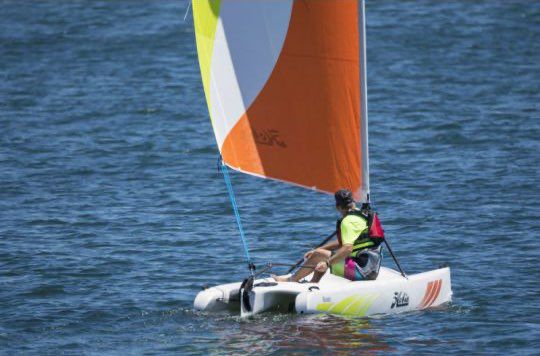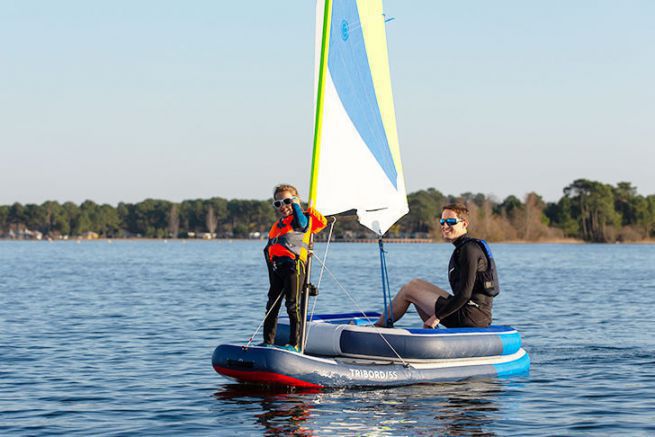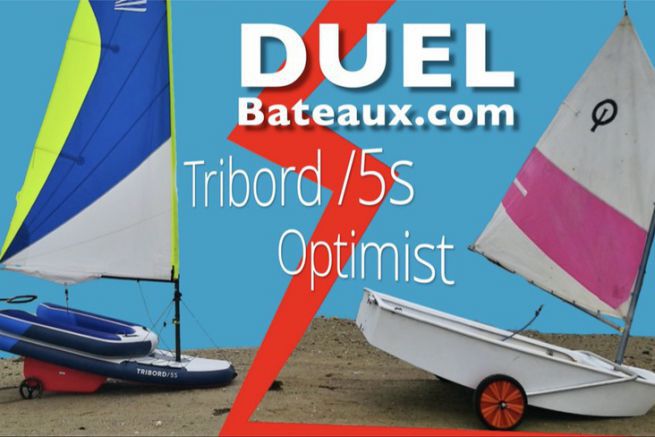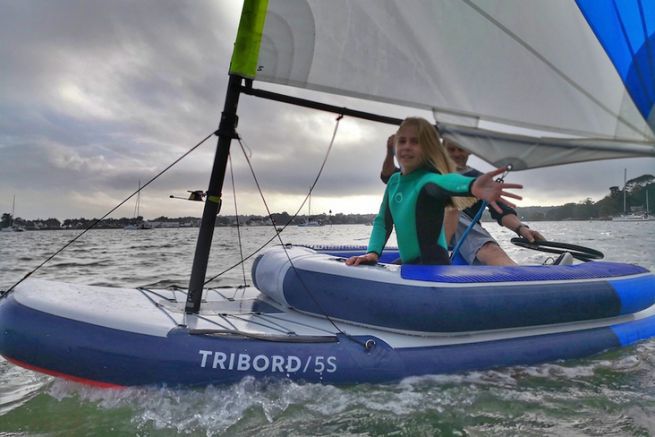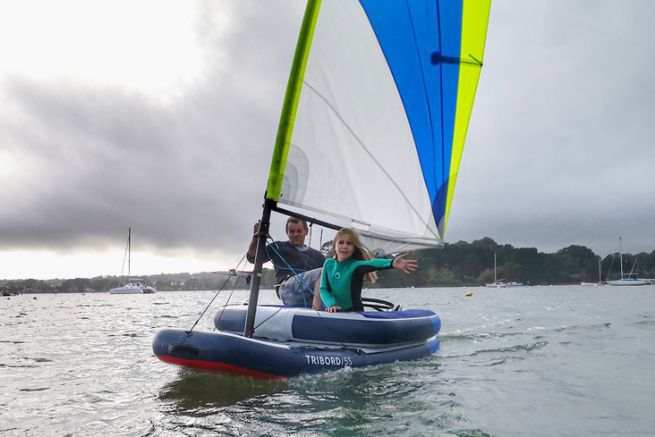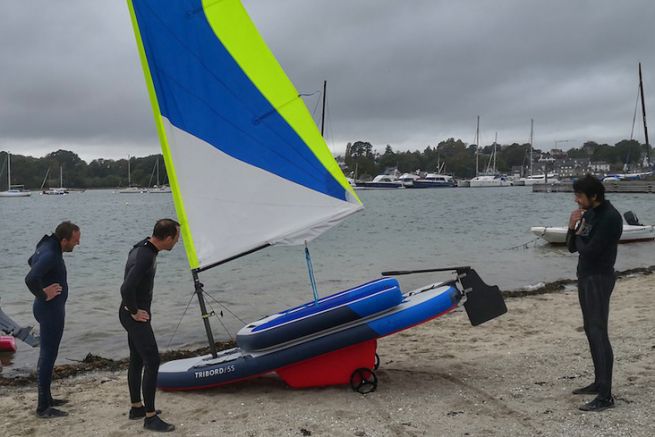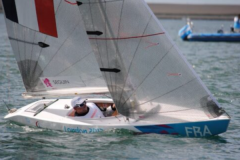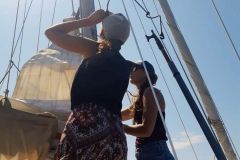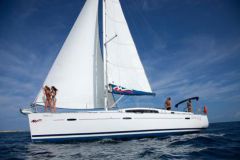Where does this boat gonflable? come from?
The Tribord 5S doesn't really look like any dinghy. Its inflatable structure exploits a technology that has been proven for more than 10 years in the field of inflatable stand up paddle. Its slightly wobbly silhouette is partly due to the constraints of the material.
The idea of using this technology is not brand new, because in 2012, the young designer Marion Excoffon is launching a very innovative inflatable dinghy. The Tiwal can be stowed in bags and in a few minutes you can inflate a dinghy that can be compared to rigid dinghies. The success is there with many awards and more than 1200 boats sold.
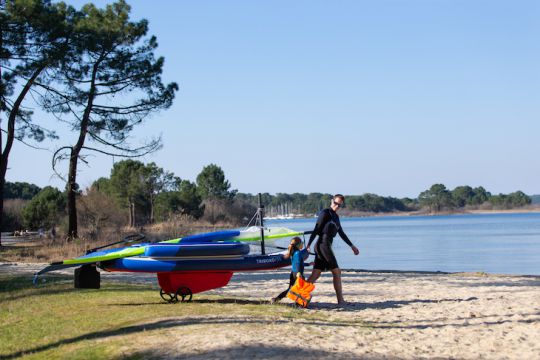
Who is the Tribord 5S? for?
By its accessibility, the 5S is a dinghy that aims to attract a clientele that may be larger than the existing one. Tribord's idea is to offer a boat so simple that anyone would be able to make one.
The Tribord teams have taken up the ingenious principle of the inflatable dinghy, but they have focused their work on user-friendliness. The Tribord 5S doesn't really aim for performance at all costs. In its own way, it revisits the "dinghy" support to make it as functional as possible. It must be recognised that to learn to sail or to have fun on the beach, the 5S is full of tricks and common sense.
And for those of you who sail in a houseboat, the inflatable sailboat finally makes the dream of the dinghy at anchor accessible. On a 10-metre boat, you will surely find a place to store the 40 kg and 1.60 m of luggage. Imagine the trips of young and old at anchor, using it as a dinghy to disembark in an inaccessible cove, to fetch bread under sail... And then, it's a silent and clean dinghy with a large load capacity.
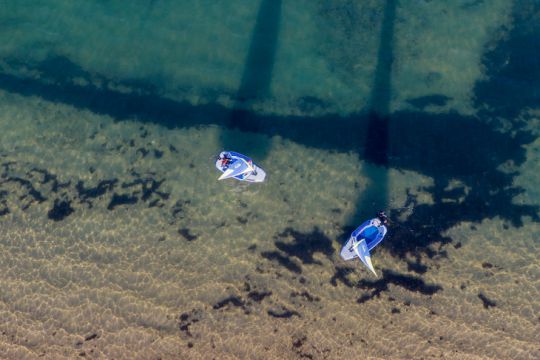
I find myself dreaming of taking the plane with this little excess of luggage, Croatia and its thousands of islands, Polynesia and its coral lagoons, and why not Asia or New Zealand. That's it, the dream machine is on its way, with the world's smallest sailboat, I see myself trying the adventure of itinerant camping. How much does déjà? cost? We'll come back to it later, but it feeds imaginaire?!
But without going that far, when you live in the city and you can store your boat in a cupboard, it opens up new perspectives. Take the train or the car with your dinghy in the bag and go spend a weekend by the sea or by the lake. And in the summer, if you go to the beach, it will be an ideal holiday companion.

Sailing for all
The Tribords teams based in Hendaye have invested a lot of resources in this project. The gestation period lasted 5 years. They produced 15 prototypes, 90 people were involved in the study, and nearly 100 people tested the boat, not counting the participation of Tanguy de Lamotte and Anne-Claire Le Berre. The sports giant has made a big splash with the 5S by ingeniously revisiting the concept of the fun and easy dinghy.
Can we envisage a similar success for paddle?? Nothing is at stake, especially since there is a big price difference. But the phenomenal success of paddle was unpredictable, nobody had imagined that in 10 years there would be so many people wanting to get on an inflatable board to ride around trying not to fall.
When you think about it, some newcomers on the water might be happy to sit down and use the wind to push them. Personally, I think there's some idea in that. So if the boat is cheap and extremely easy to learn, normally it could appeal to a wide audience (at least those who prefer to be pushed by the wind rather than pulling on an oar).

Who are the competitors of the Tribord 5S?
With a boat at 2,500 euros, Décathlon strikes hard to penetrate the market with a very worked out price.
This is the price of an Optimist sailing school, much less versatile. In dinghy for children the Open bic is more fun and modern than an Optimist, but it is also more expensive, it will cost 3 500 euros.
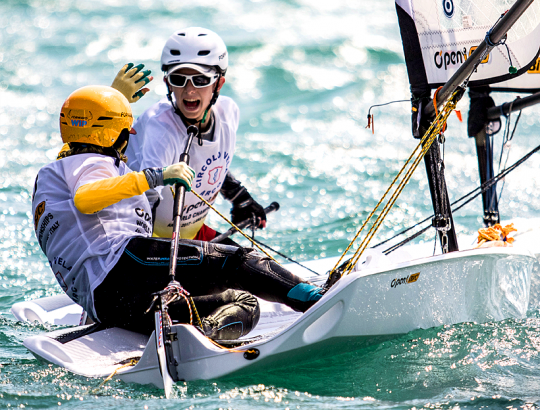
We could compare it to the Tiwal, which is much more expensive, but capable of competing with high-performance dinghies, which the 5S does not claim to be. The Tiwal starting at 4800 euros offers top-of-the-range performance and the 5S is more user-friendly and is a discovery dinghy.
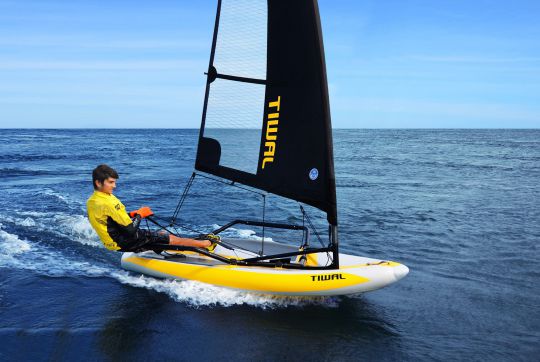
Looking at the introductory multihulls, the Hobie Cat Bravo (3.66 m), the cheapest in the catalogue, is 4,626 euros. It is close to the 5S programme, but weighs 88 kg (compared to 40 kg for the inflatable).
